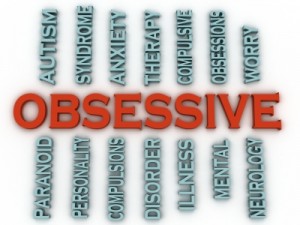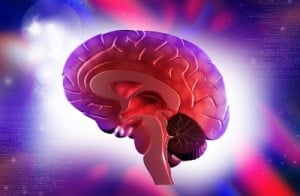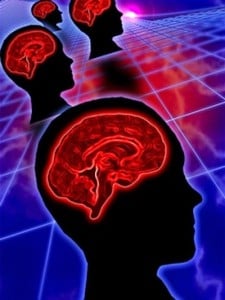
Obsessive Compulsive Disorder, or OCD, is characterized by obsessive, repetitive behaviors and compulsions, and the inability for the person to control these impulses. Ritualistic behaviors develop over time as a result, and often end up heavily controlling the lives of those suffering. Plagued with troubling thoughts, a person with OCD will take action in an attempt to temporarily ease their mind. Ritualistic behaviors develop over time as a result, and often end up heavily controlling the lives of those suffering.
OCD can present itself differently from person to person depending on the obsessions of the sufferer. For example, if someone has obsessive thoughts about germs, their compulsion may be to wash their hands an unnecessary amount of times throughout the day, taking a great deal of time and causing the hands to become red, chapped and sore. Another example is an obsession with locking doors. Even if the person has just locked their car doors, they may click the lock button over and over again just to ensure it is locked, even though they had just completed this action. Everyone understands the feeling of double checking to ensure a door has been locked, however when these feelings become obsessive to the point where a person is locking a door ten times before walking away, this is where the issue lies. No pleasure is obtained by the person for these obsessive behaviors whatsoever, as it is simply an attempt to ease negative thoughts and feelings.
People with OCD commonly are obsessive about order, organization, and symmetry. Fixations with certain numbers can occur. An example of this is a patient who had to have everything occur in fours. If this patient was using the computer, they could only have four windows open at a time, no more and no less. Those suffering with OCD may be well aware of how the behaviors seem senseless and unnecessary, but these thoughts do not prevent them from continuing these behaviors. Eventually, these ritualistic behaviors start becoming a large problem, interfering with a person’s daily life.
To be diagnosed with OCD, at least an hour of a person’s day must be preoccupied by the obsessions and/or compulsions. Symptoms vary over time with some situations resulting in worsening of symptoms. When symptoms become severe, they can keep a person from being able to live life normally by interfering with their ability to complete normal responsibilities such as going to work, school, or even doctor appointments.
OCD affects approximately 1% of the US population, with an estimated 2.2 million people diagnosed, affecting both men and women equally. OCD often begins in earlier childhood or the teenage years with one third of the adults who have OCD first noticing symptoms in their younger years. Many people are diagnosed by age nineteen. Although the official cause of OCD has yet to be determined, OCD has been known to run in families, though there is no explanation as to why some members of a family may inherit the disorder while others do not. The parts of the brain responsible for causing OCD are known to be responsible for anxiety and fear. Stress and other environmental factors may play a role as well. Other mental health issues and disorders such as anxiety, eating disorders, depression, and autistic spectrum disorders often accompany OCD.
Because the basis of OCD begins in the brain, neurofeedback is an excellent option for easing obsessive thoughts and compulsive behaviors, teaching the brain to calm these impulses. Known to relieve anxiety and depression, neurofeedback targets all of the points in the brain that are having trouble functioning and/or communicating with other parts of the brain to identify the roots of OCD and contributing factors for each individual. In addition to helping calm the brain, improvement in performance also occurs with neurofeedback, which becomes apparent in work, school and even in sports. As an athlete progresses in standing, competing at a higher and higher level, he or she may develop obsessive worries and compulsive rituals that may interfere with successful performance. These can be successfully handled through sports-related neurofeedback applications.
The better the brain functions, the better the person functions. Free yourself from obsessive thoughts and behaviors and start living the life you deserve, a life without constant anxiety and fear!
First image courtesy of marcolm at FreeDigitalPhotos.net
Second image courtesy of David Castillo Dominici at FreeDigitalPhotos.net









